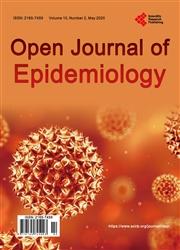The Epidemiology of Self-Harm in the Romanian Juvenile Prison System: A Two-Year Cohort Study
引用次数: 1
Abstract
Background: There is no extensive literature on social predictors of self-harm in the juvenile justice system, over the time of a prisoner’s sentence. Self-harm behavior displays a higher prevalence in prison, 11 to 14 times greater than in the general population. Our study extended the current research in self-harm by examining dynamic factors of self-harm in adolescents over their sentence in the Romanian juvenile prison system. Method: The present research examined longitudinal predictors of self-harm behaviors in 439 adolescent inmates (Mage = 16.21; 5.2% female, 94.8% male), enrolled in prison during 2011-2012, following them for two years. A series of time-to-event analyses were applied to start from the time of the subject’s internment in the juvenile prison system. Results: Findings from the multivariate survival analyses show that adherence to self-harm conduct in prison was consistently influenced by family factors and prison contexts; although low ability to cope with frustration, sensitivity and emotion dysregulation also matter-ed. Keeping the other covariates invariant, serving a prison sentence in a closed regime reduces the probability of remaining free of self-harm events, increasing the monthly hazard of self-harm by a factor of 5.26 on average (HR = 5.26, 95% CI = 2.37 - 11.64) compared to the open regime. Conclusion: A on studies the each in self-harm, according to their emerging needs.罗马尼亚少年监狱系统中自残的流行病学:一项为期两年的队列研究
背景:在青少年司法系统中,没有广泛的关于自我伤害的社会预测因素的文献,随着囚犯被判刑的时间。自残行为在监狱中更为普遍,是普通人群的11到14倍。我们的研究通过检查罗马尼亚少年监狱系统中青少年服刑期间自残的动态因素,扩展了目前关于自残的研究。方法:本研究对439名青少年囚犯自残行为的纵向预测因素进行了调查(Mage = 16.21;5.2%为女性,94.8%为男性),在2011-2012年期间登记入狱,随访两年。一系列的时间-事件分析应用于从对象在少年监狱系统被拘留的时间开始。结果:多变量生存分析结果表明,家庭因素和监狱环境持续影响监狱自残行为的依从性;虽然应对挫折的能力较低,但敏感和情绪失调也很重要。在保持其他协变量不变的情况下,与开放制度相比,在封闭制度下服刑降低了不发生自残事件的概率,每月自残风险平均增加5.26倍(HR = 5.26, 95% CI = 2.37 - 11.64)。结论:A对每个人的自我伤害进行研究,根据他们的新兴需求。
本文章由计算机程序翻译,如有差异,请以英文原文为准。
求助全文
约1分钟内获得全文
求助全文

 求助内容:
求助内容: 应助结果提醒方式:
应助结果提醒方式:


